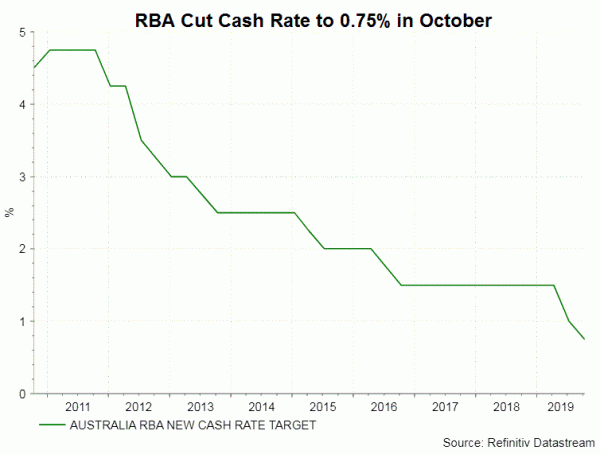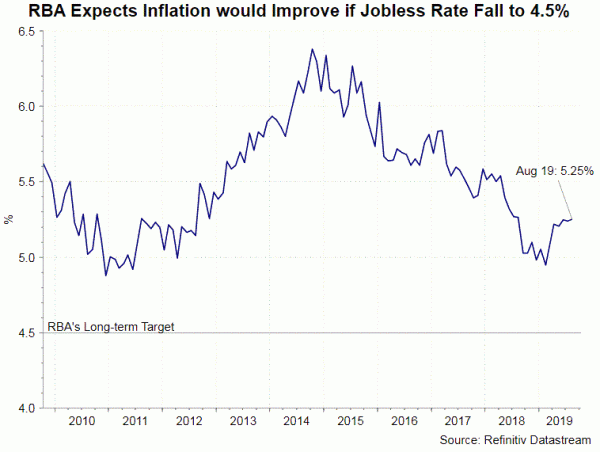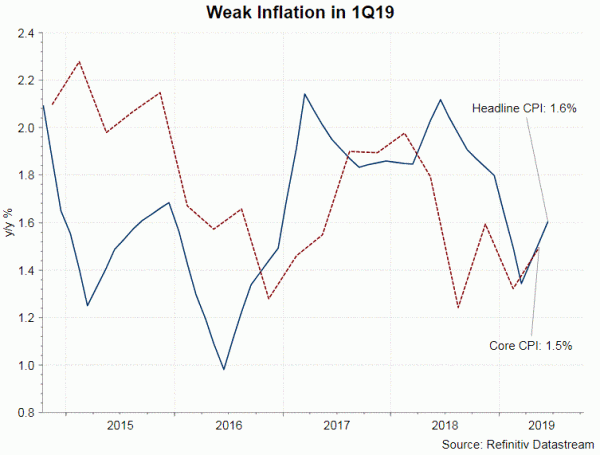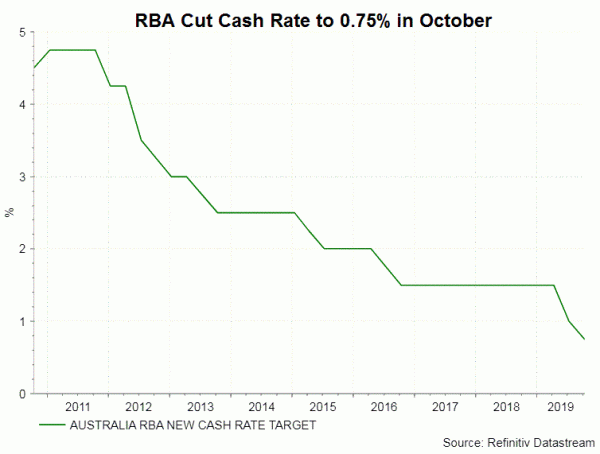In the minutes for the October meeting, RBA revealed the debate for the -25 bps rate cut. The key reasons for lowering the policy rate to 0.75% are disappointing employment and inflation data, as well as downside risk to global economic outlook. These outweighed the arguments for staying put, which include shrinking policy reserves, diminishing effectiveness of rate cut and more time to gauge the impact of previous rate cuts and tax cuts. The outlook remains bearish, suggesting that another rate cut towards year-end cannot be ruled out. This is in spite of the concern that house price could be “overly inflated”.
As noted in the minutes, the members “judged that lower interest rates would help reduce spare capacity in the economy by supporting employment and income growth and providing greater confidence that inflation would be consistent with the medium-term target”. They also acknowledged “the trend to lower interest rates globally and the effect this was having on the Australian economy and inflation outcomes”.
Interestingly, the minutes revealed detailed arguments in favor of keeping the policy rate unchanged. On the argument that monetary stimulus should be kept in reserve, the minutes noted that this “requires changes in interest rates to be the key driver of demand, rather than the level of interest rates, which experience has shown to be the more important determinant”. Policymakers judged that “the Board could reduce the likelihood of a negative shock leading to outcomes that materially undershot the Bank’s goals by strengthening the starting point for the economy“.
Concerning the worries that further rate cut could lead to house price bubble. RBA suggested that there is “only a limited risk of excessive borrowing at the current juncture: household disposable income growth (and thus borrowing capacity) is weak; the memory of recent housing price falls is still fresh; and banks are still quite cautious in their appetite to lend”. The members expected that “higher asset prices were considered unlikely to present a risk to macroeconomic and financial stability. This assessment would need to be reviewed if rapidly increasing asset prices were accompanied by materially faster credit growth, weak lending standards and rising leverage“.
Some members questioned that further rate cut might have lower effectiveness than before. Others suggested that the exchange rate channel “was still considered likely to work effectively“ as was the cash flow channel “given that household interest payments exceed receipts by more than two to one“
The minutes sent a dovish note by rebuking the arguments against lowering interest rate further. It also paves the way for another rate cut. As suggested in the mintues, the members would “continue to monitor developments, including in the labour market, and was prepared to ease monetary policy further if needed to support sustainable growth in the economy, full employment and the achievement of the inflation target over time”.
Data flow in the coming two weeks would be important for the RBA to decide whether to ease further in November. Employment report for September would be released on October 17. The unemployment rate is expected to stay unchanged at 5.3%, while the number of payrolls projected to have gained +15K, down from a +34.7K addition in the prior months. The inflation report will be due October 30. Meanwhile, Governor Philip Lowe is scheduled to speak on October 29.





 Signal2forex.com - Best Forex robots and signals
Signal2forex.com - Best Forex robots and signals




